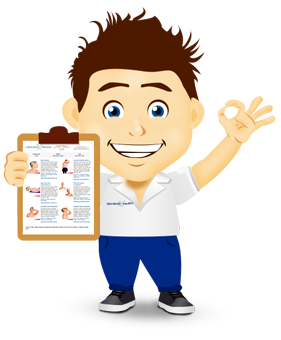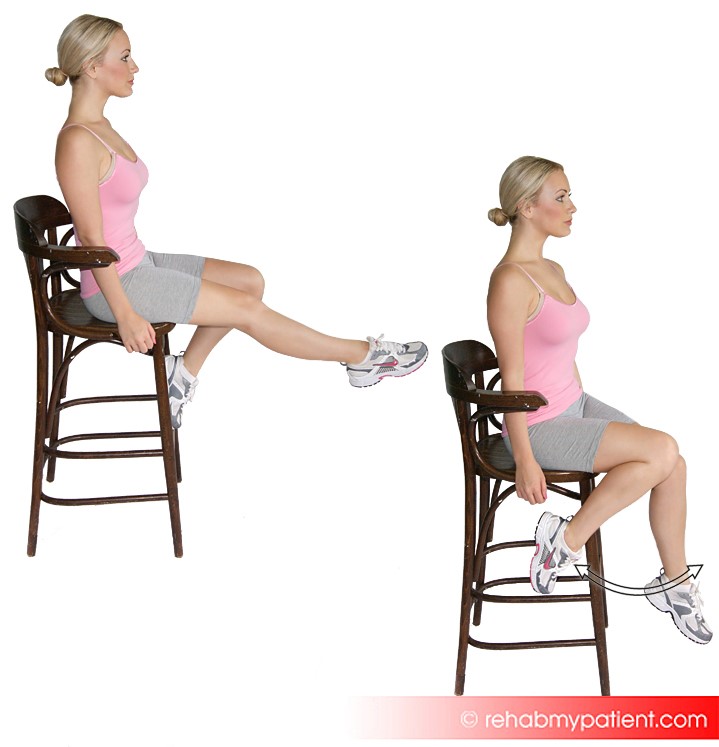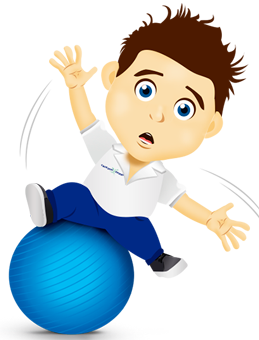
Next steps:
Feel free to read the advice sheet below! To get the full benefit click on 'Start treatment'. By starting the treatment you will get access to weekly rehab programmes online for FREE. You will be able to track your progress, pain levels and we will remind you to do your exercises every day!
A torn meniscus is one of the most common of all knee injuries. Any activity causing you to forcefully twist or rotate the knee, especially when you put all of your weight on it, can lead to a meniscus tear. In each of the knees, you have two menisci, which are c-shaped pieces of cartilage acting as a cushion between the thighbone and the shinbone. When the meniscus tears, it causes swelling, pain and stiffness. The knee might feel unstable, similar to if it were going to collapse.
Any activity causing you to rotate or twist the knee forcefully can tear the meniscus, such as suddenly stopping and turning or pivoting aggressively. Deep squatting, kneeling of lifting a heavy object can lead to a tear. Most torn menisci occur on the sports ground. It’s rare to tear both at the same time, usually it is just the medial (inside) or lateral (outside) meniscus.
But a torn meniscus is not always traumatic in older individuals, degenerative knee changes might be responsible for a torn meniscus. If this is the case, the meniscus might tear with relatively low force, such as just jogging for a bus or stepping off a curb. Knee pain is just as severe, with the patient having immediate difficulty putting weight through the leg. The problem here is that the meniscus had been degenerating for probably years prior to the injury and at the point of injury just something small was enough to put it over the edge.
Meniscus Tear Anatomy
The knee is one of the biggest and most complex of all joints found in the body. It joins the shin bone and thigh bone together. The smaller bone running alongside of the tibia and the kneecap are the two other bones that complete the knee joint. Tendons keep the leg muscles and knee bones connected to enable the knee joint to move. Ligaments join all of the knee bones and deliver stability to the knee.
The anterior cruciate ligament is the one that prevents the femur from sliding backward along the tibia. The medial and lateral collateral ligaments make sure the femur doesn’t slide from one side to the other. It is the posterior cruciate ligament that prevents the femur from sliding forward along the tibia.
There are two menisci – the medial and lateral. They are C-shaped, and act as cushions. They absorb force and help to protect the underlying cartilage. Sometimes when a doctor or consultant surgeon describes your injury they might refer to it as a torn cartilage (a commonly used lay term for torn meniscus).
When trauma to the knee is very significant, it might not just be the meniscus that tears. Sometimes the medial meniscus tear is associated with an ACL (anterior cruciate ligament) tear and a MCL (medial collateral ligament) tear.
Meniscus tears can come in many different sizes and varieties, including bucket handle tears, radial tears, longitudinal tears, horizontal tears, vertical tears, oblique tears and complex tears. Depending on the size and type of tear will depend if you may require surgery.
It should also be noted that a previous meniscus tear tends to speed up the likelihood of knee arthritis. So expect to have problems 5-20 years after your first tear and get the knee examined regularly by your therapist to ensure it is ok.
How to Treat a Meniscus Tear:
- Ice
Ice can help to reduce swelling and pain in the knee. Place the ice on the area for 5-10 minutes at a time three to five times per day. Make sure to have the ice wrapped in a thin towel to prevent ice burn.
- Therapy
Physical therapy will help with strengthening the muscles surrounding the knee and legs to provide support and stabilization to the knee joint. Electrotherapy can help reduce inflammation and pain. Your Rehab My Patient therapist will guide you on the correct exercises to do, and how many times to do them.

- Medication
Certain relievers can help you to cope with pain and inflammation. Limit their use to only two weeks if possible.
- Rest and Reduce Weight Bearing
Avoid participating in any activities that further aggravate the pain in your knee, especially if the activity might cause you to twist the knee. You might want to consider using crutches to take the pressure from your knee and promote the healing process. When the inflammation reduces you will be able to start to weight bear again. This could be anywhere from 2 weeks to 6 weeks.
- Surgery
Surgery is very common but depends on how bad the tear is. Often therapy will be done first to see if the patient will respond to treatment but if not, then surgery may be considered. The tear can be trimmed or stitched up. Often this can result in less pain and the ability to weight bear properly through the joint.
It should be noted that healing to the meniscus can be slow as it does have a poor blood supply. Healing can take anywhere up to a year and sometimes more. The most important thing with the meniscus tear is to improve knee flexion, and ask your therapist for exercises to do this.
Tips:
- Exercises for improving knee flexion and strengthening the muscles in the leg can help to protect and stabilize the joints.
- Begin participating in activities and exercise programs slowly. Increase intensity gradually.
- If you are participating in any recreational sports, make sure you have the proper protective gear and use the proper form.
- Athletes playing football, tennis or basketball are particularly prone to this condition.
- Shoe inserts or arch supports can help with distributing force evenly around the knee and decrease the amount of stress placed on certain areas of the knee. This could be considered if there is a dropped arch or poor foot biomechanics.
- As you grow older, the risk of tearing your meniscus increases from all of the wear-and-tear on your knees.

